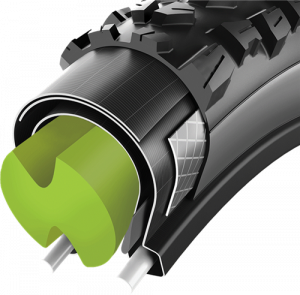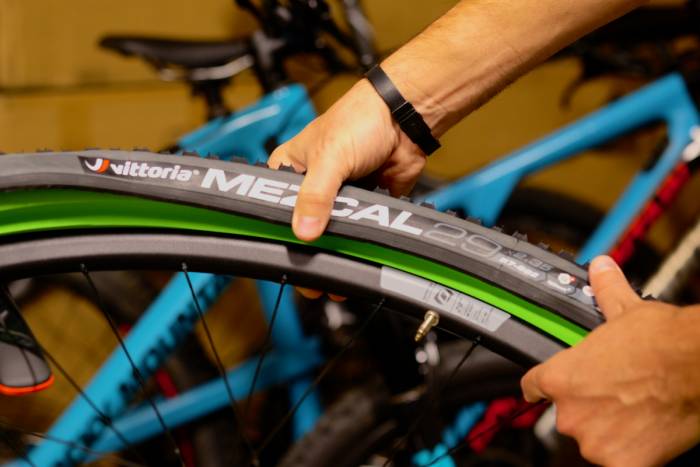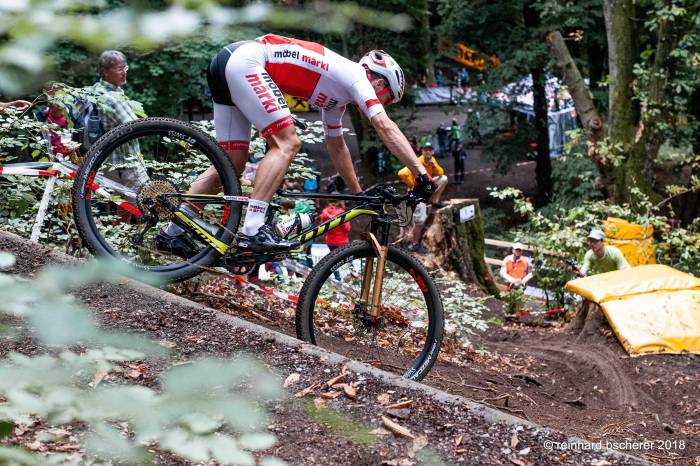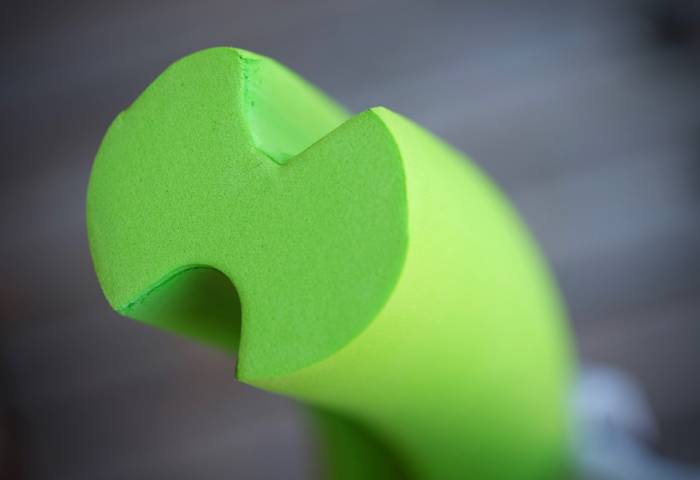As riders push mountain bikes harder and faster, it’s becoming increasingly difficult to keep air in the tires. Vittoria’s Air-Liner foam inserts reduce the risk of flats and wheel damage while pushing the performance envelope.
Tubeless tires are among the best things to hit mountain bikes since the suspension fork. They permit low tire pressures for increased traction while reducing the threat of pinch flats. But there are drawbacks. Low air pressure and hard impacts regularly cause catastrophic damage to tire casings and rims.
Although foam tire liners are nothing new, they’re gaining in popularity. Vittoria Air-Liners are the newest and solve many of the foibles other inserts suffer like tricky installation, limited protection, and added rotational weight.
Vittoria Air-Liner: No-Compromise Design
Vittoria’s engineering team created its tire inserts to mitigate common compromises. Made of a specially formulated polymer, the lightweight foam doesn’t absorb liquids, making it compatible with all tire sealants. It’s dense enough to guard against hard hits and even functions as a run-flat solution in the event of total air loss. But it retains enough elasticity for lively and dynamic trail feedback.
The dual-channel cutouts are central to the liner’s functionality. At the rim bed, the shallow groove aids installation by keeping the liner aligned and accepts any standard valve stem. Along the outer edge, a deep cutout creates two pointed peaks just below the contact patch. The main feature of the triangulated shape is its progressive rate of energy damping.
Because the liner consumes so much of the tire’s inner volume, there is less air to compress, which reduces undesirable rebound, or bounce. The attenuated shock absorption prevents the tire from deflecting off bumps and acts like dampened suspension for your tires.
The most noteworthy attribute of the shape is the full reinforcement of the sidewall. Riding with low air pressure typically sacrifices lateral sidewall support. When leaned into a hard turn, underinflated tires flex causing an unnerving feeling of instability. If pushed too hard, tires can unseat causing instant deflation. With the Air-Liners in place, the sidewalls feel substantially more supported.
Vittoria Air-Liner Installation and Field Repair
Mention the words “tire liner” to many mechanics, and they scatter like rats. Installation usually results in bloody knuckles and a fist full of head hair. By contrast, Vittoria’s foam tube pops into place with surprising ease.
Sold in a single length to accommodate all wheel diameters, Air-Liners are available in four widths, covering everything from 1.9-inch XC tires to 4-inch fatbike wheels. Each kit is trimmed to length and held together with a zip tie. A thin coating of water helps the liner slip into place.
Removal isn’t nearly as challenging as other tire liners but still requires considerable effort. Because the foam insert presses the tire against the rim wall, getting a tire lever under the bead takes some doing. Field repairs — not that you should need to make many — are tricky.
The Shred Test
The most noticeable difference with Air-Liners is the muted damping. Not to say the tires feel dead or wooden, but it’s a unique sensation when hitting roots and rocks. With so little air to manipulate, adjusting tire pressure by just a few pounds makes a significant change. If you’re not a tire pressure pedant now, you will need to become one.
When put to an aggressive lean, Air-Liners support the sidewall but still produce some residual squirm. Hard-charging turns at low PSI still feel a bit dodgy. But, the cutout at center of the liner maintains a natural transition from the tire’s center line to the cornering edge. Despite feeling the sidewalls wrinkle and wiggle, there’s no fear of a tire burping air or collapsing on itself. In that regard, they inspire confidence in corners.
Perhaps the most compelling endorsement comes from the pro race circuit. This summer, Gregor Raggl won the Austrian National Cross Country Championships using an Air-Liner insert in his rear tire. In doing so, he’s likely the first person to win a national XC title with a tire liner. He went on to say he has yet to flat in a race with Air-Liners installed.
Who Needs Air-Liners?
If you’re a proponent of high pressures –– and you shouldn’t be –– you won’t reap the full benefits of the Air-Liner system. But it could save you from a ride-ending tire cut or damaged rim. Outside of that scenario, the advantages are minimal.
For those who embrace low tire pressures, Air-Liners will likely improve your riding enjoyment. Not only in the ability to thwart tire damage, but the composed ride quality is quite nice. For riders rolling on expensive carbon fiber rims, Air-Liners are a sound insurance policy.
The Wrap Up
At $85 per wheel, Vittoria’s super foam is not a small investment, but it’s worthwhile. Tires and rims aren’t cheap, and Air-Liners could save both from an early demise. Unlike other liners, the low 90-gram weight for the 1.9-2.25 kit makes no discernible alteration to acceleration or handling. Most riders would be hard pressed to feel the added grams.
For riders phobic of flat tires, Air-Liners certainly reduce the risk of tire cuts, but the performance gains and ease of use set them apart from other systems.
Christophe Noel is a freelance journalist, photographer, and general vagabond. A seeker of stories untold, he can often be found with a map in hand, lost, in the most remote corners of the globe. The founder of Clean Drink Adventures, he believes in the power of the traveler and doing good as you go.












